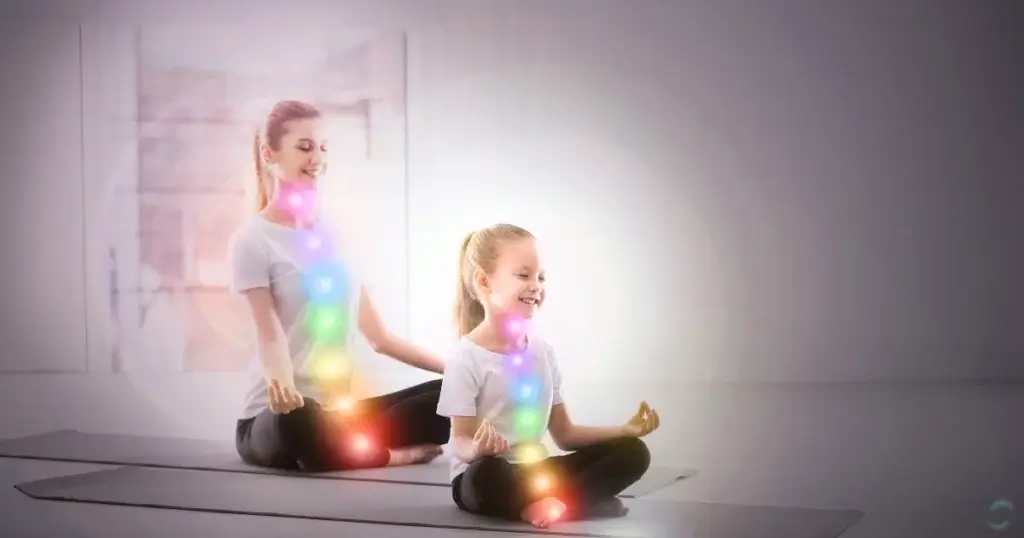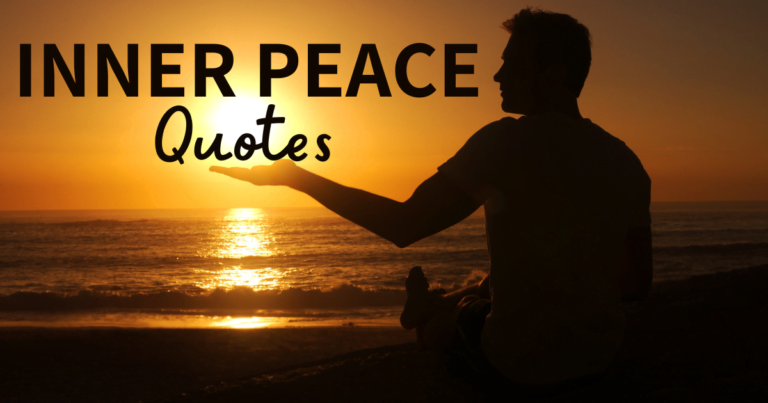Rainbow Meditation: How Colors Can Enhance Balance in Your Life

Imagine a path to inner peace paved with vibrant colors. The rainbow meditation technique offers just that, using the mesmerizing spectrum of light to cultivate relaxation, focus, and a deeper connection to your inner peace. This ancient practice, found in various forms across cultures, keeps the symbolic power of colors to guide you on a journey of self-discovery and balancing life.
What is Rainbow Meditation?
Rainbow meditation is a guided visualization technique that utilizes the seven colors of the rainbow – red, orange, yellow, green, blue, indigo, and violet – to activate different energy centers within the body, also known as chakras. Each color is believed to correspond to specific emotions, qualities, and physical aspects. By focusing on these colors and their associated energies, you can promote balance and well-being in your mind, body, and spirit.
Benefits of Rainbow Meditation:
i. Stress Reduction: This meditation technique is known to effectively lower stress levels and promote feelings of calmness.
ii. Emotional Balancing: By focusing on the energy centers associated with different emotions, rainbow meditation can help you process and release negative emotions, fostering a more balanced emotional state.
iii. Improved Focus: Through visualization and concentration on the colors, rainbow meditation can enhance your ability to focus and stay present in the moment.
iv. Enhanced Creativity: The vibrant colors can spark creativity and help you access new ideas and perspectives.
v. Spiritual Connection: This practice can deepen your connection to your inner self and your place in the universe.
Getting Started with Rainbow Meditation:
Before you begin, find a quiet, comfortable space where you won’t be disturbed. Here’s a step-by-step guide to experiencing the magic of rainbow meditation:
1. Preparation (5 minutes)
- Find a comfortable position: Sit or lie down in a position that allows your spine to be straight and relaxed.
- Set an intention: Before you begin, set an intention for your meditation. What do you hope to achieve through this practice?
- Close your eyes and take a few deep breaths: Focus on your breath, allowing it to become slow and steady. Breathe in deeply through your nose and exhale slowly through your mouth.
2. Visualization (20-25 minutes)
- Imagine a white light: Begin by visualizing a pure white light surrounding your entire body. Imagine this light cleansing and purifying you.
- Red: Now, visualize a vibrant red light emanating from the base of your spine, the root chakra. Focus on this color for a few moments, feeling the energy associated with grounding, stability, and physical well-being.
- Orange: Move your focus slightly upwards to the sacral chakra, located below your navel. Here, visualize a warm orange light, associated with creativity, passion, and healthy relationships.
- Yellow: Ascend further to your solar plexus chakra, located just above your navel. Visualize a bright yellow light, representing your personal power, confidence, and self-esteem.
- Green: Focus on your heart chakra, in the center of your chest. Here, see a vibrant green light, symbolizing love, compassion, and forgiveness.
- Blue: Move your awareness to your throat chakra, located at the base of your throat. Visualize a calming blue light, associated with communication, self-expression, and truth.
- Indigo: Ascend to your third eye chakra, located between your eyebrows. See a deep indigo light, representing intuition, wisdom, and inner vision.
- Violet: Finally, visualize a crown chakra at the top of your head, pulsating with a radiant violet light. This color represents spirituality, connection to the divine, and universal consciousness.
- Rainbow Bridge: Once you have focused on each color and its associated energy center, imagine a beautiful rainbow bridge forming within you. This bridge connects all the chakras, allowing the energy to flow freely throughout your entire being.
3. Integration (5 minutes)
- Slowly bring your awareness back to your breath and body.
- Spend a few minutes reflecting on your experience.
- Take a few deep breaths before gently opening your eyes.
Tips for a Successful Rainbow Meditation:
- Practice Regularly: As with any meditation technique, consistency is key. The more you practice, the deeper the benefits will be.
- Use Guided Meditations: If you’re new to meditation, consider using a guided rainbow meditation recording. These recordings can help you visualize the colors and focus on your breathing.
- Focus on Your Senses: Engage your senses while visualizing the colors. Imagine the warmth of the red light or the calmness of the blue light.
- Don’t Judge Your Thoughts: It’s natural for thoughts to arise during meditation. Don’t judge yourself or try to force them away. Simply acknowledge them and gently bring your focus back to the colors and your breath.
Variations of Rainbow Meditation: Deepening Your Practice
The beauty of rainbow meditation lies in its adaptability. You can personalize the practice to address specific needs and preferences. Here are some variations to explore and deepen your experience:
1. Chakra Balancing
Our chakras, those energy centers within us, can sometimes become imbalanced due to stress, emotional blocks, or unhealthy habits. Rainbow meditation offers a powerful tool for addressing these imbalances. If you’re feeling particularly grounded or lacking in motivation, spend extra time focusing on the vibrant red light at your root chakra. Visualize it strengthening your connection to the earth, fostering stability, and grounding your energy.
Similarly, if you’re struggling with self-expression or communication, dedicate more time to the blue light of your throat chakra. Imagine the calming blue light washing away any blockages, allowing your voice to flow freely and authentically. By directing your awareness and visualization towards specific colors and chakras, you can promote balance and healing within those energy centers.
2. Crystal Meditation: A Touch of Magic
Crystals have long been used for their healing properties and ability to amplify energy. You can incorporate crystals into your rainbow meditation for an extra layer of focus and power. For each chakra, find a crystal that resonates with its corresponding color. Here are some popular choices:
- Red: Garnet or Bloodstone (Root Chakra)
- Orange: Carnelian or Citrine (Sacral Chakra)
- Yellow: Tiger’s Eye or Yellow Jasper (Solar Plexus Chakra)
- Green: Green Aventurine or Malachite (Heart Chakra)
- Blue: Blue Lace Agate or Sodalite (Throat Chakra)
- Indigo: Amethyst or Lapis Lazuli (Third Eye Chakra)
- Violet: Clear Quartz or Amethyst (Crown Chakra)
Before your meditation, cleanse your crystals with running water or smudging. During your practice, place the crystals on or near the corresponding chakra points on your body. As you visualize the colors, feel the energy of the crystals resonate with the colors, amplifying the healing properties of the meditation.
3. Nature Connection: Finding Harmony in the Rainbow World
Nature provides a beautiful backdrop for deepening your rainbow meditation experience. Instead of simply visualizing the colors within your mind’s eye, draw inspiration from the natural world around you. Imagine a fiery red sunset igniting your root chakra with vitality. Feel the calming embrace of a vast blue sky as you focus on your throat chakra. See the vibrant green of a lush meadow infusing your heart chakra with love and compassion.
This connection of nature with mind allows you to dive into the magical healing power of the Earth. By practicing the colors of the rainbow with natural elements, you can create a more calming and balancing experience.
Exploring these variations allows you to perform your rainbow meditation technique that will fulfill your unique needs according to your preferences. With passionate practice and exploration, you can unlock the positive aspects of this ancient technique, enhancing inner peace, emotional stability, and a deeper connection to the world around you.
Safety and Considerations
Rainbow meditation is a safe and gentle practice for most people. However, if you have any concerns, consult with a healthcare professional before starting. This practice is not a replacement for medical treatment.
Conclusion
Rainbow meditation technique can help you to find a whole new level of creativity, emotional balance, and inner calm. The bright shades act as a productive way of establishing a connection with your soul and channeling your inner flow of energy. Now, inhale deeply, shut your eyes, and set off on a voyage around the rainbow, one hue at a time.






